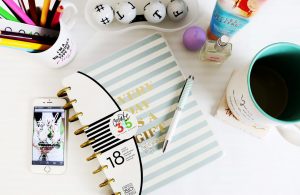
Photo by Drew Beamer on Unsplash
This week’s goal areas for improving my digital literacies according to the BC Digital Literacy Framework:
4. Digital Citizenship – b. Privacy and Security – understands the security implications of computer networks and client/servers. (Gr. 10-12) AND j. Understanding and Awareness of the Role of ICT in Society – is aware of the general trends within new media even if he/she does not use them. (Gr. 10-12)
Disclaimer: This blog post will have almost nothing to do with the work I did on my course this week, since what I did was a continuation of last week. Instead, I am looking at a behaviour trend and forcing myself to change something about it.
It seems everything I read now or watch on TV, I have this unreasonable need to fact check. If we are watching a science fiction show or a comedy, I can relax, but if we are watching anything based even remotely in real life, I am driving my husband nuts by simultaneously researching on my computer: triangulating or trying to find a primary source. If I can’t find sufficient sources on my regular google.ca search, I will try duckduckgo.com or switch to an incognito window and try google.com or bing.com.
In researching this blog post, I found this article which states Baidu.com is the most common search engine used in China. I think I will try that out in the next few weeks to see what perspectives it gives, particularly on apps that may be available in China. Yandex.com is popular in Russia, as is Google, so maybe I should try Yandex using my Cyrillic alphabet keyboard and my trusty English/Ukrainian dictionary.
Of all these search engines, DuckDuckGo doesn’t store personal information or follow with ads, so it really is what I should be using, but habits are hard to break. Another one I should consider, from the article, is Ecosia.org. It is based in Berlin, Germany and uses the money from advertising to plant trees around the world! 🌱Similar to DuckDuckGo, it doesn’t store your searches, use tracking tools or sell your data.
Did I check the veracity of this article? Um, yes. 🙄
By searching on Ecosia, I found a number of sites confirming Baidu as the most popular search engine in China. Two were:
Dragon Social – which also had background information on China’s Great Firewall. This article references primary information sources.
There were many sites confirming Yandex as a popular Russian search engine, including:
StatCounter – which is a primary source.
I also went to DuckDuckGo’s homepage and it stated “Our privacy policy is simple: we don’t collect or share any of your personal information. Ever.” I also looked at Ecosia’s home page. After that, I switched my preferences in Chrome so I now use Ecosia as my default search engine. We shall see how that affects my searches in the next few weeks compared to my husband who will still be on Google.

Recent Comments